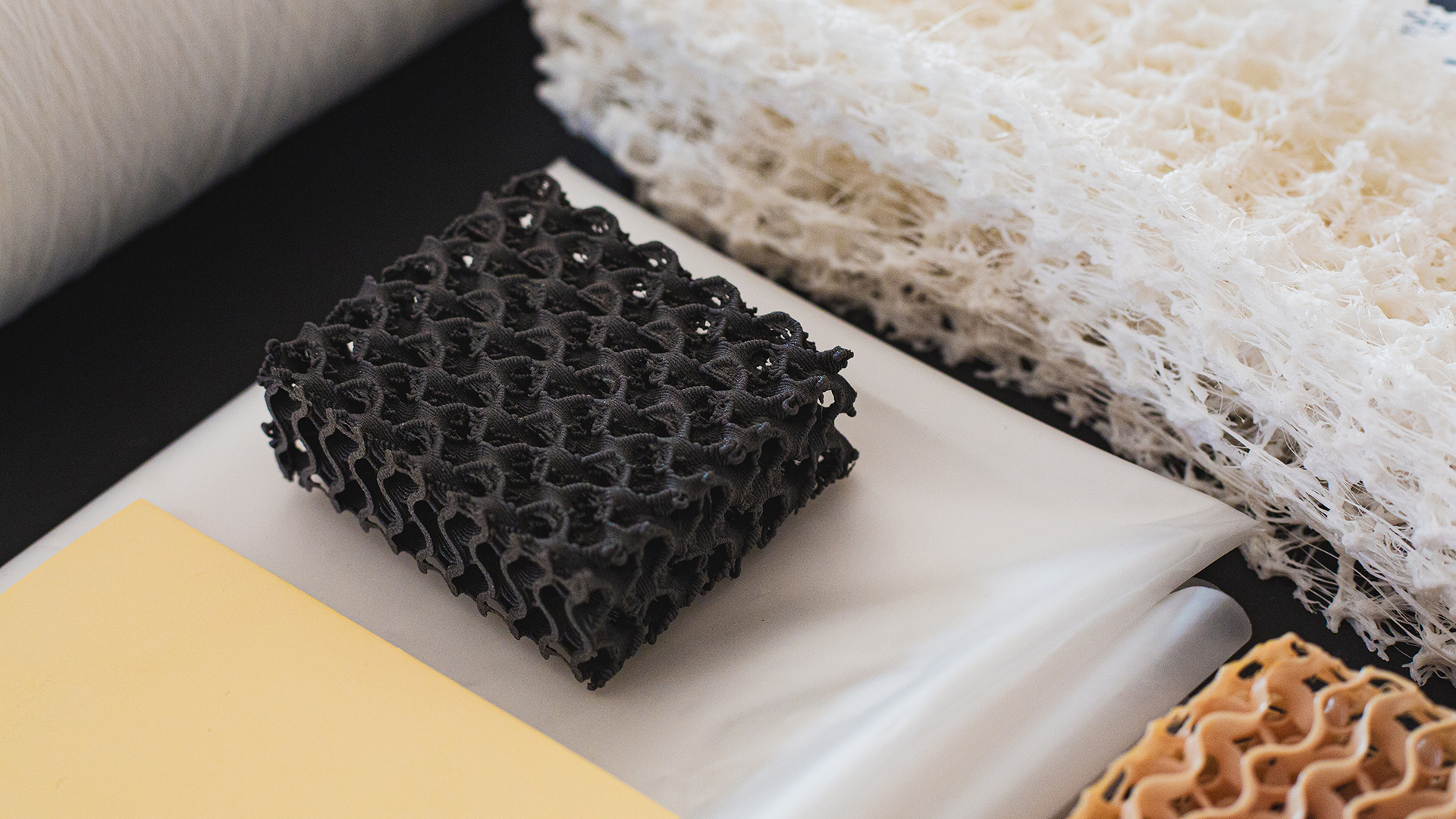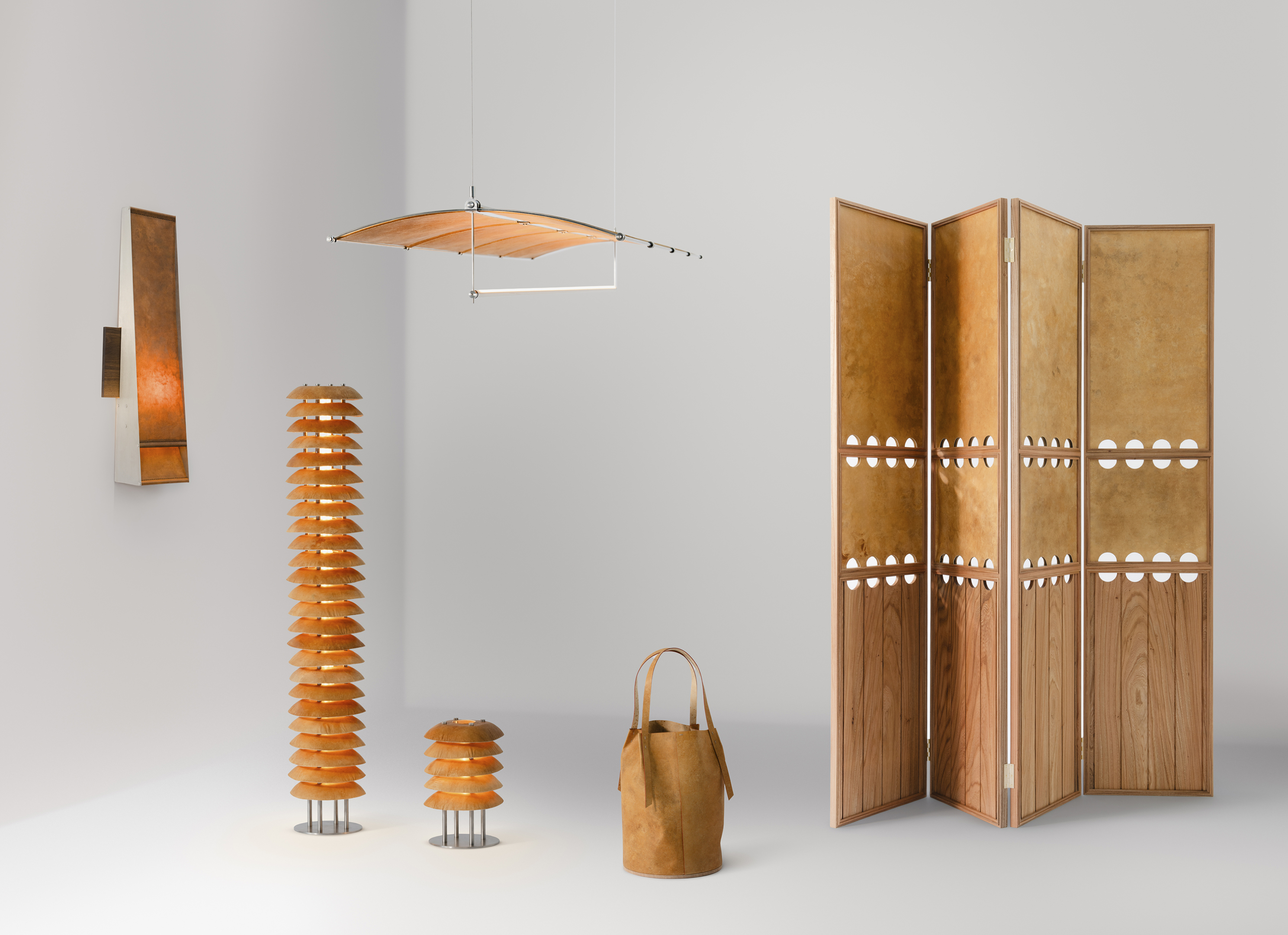With an abundance of waste created by a surplus use of virgin plastics, and poorly considered materials, staying up to date with evolving material innovations is not just about keeping pace with trends; it’s about equipping designers with tools that tackle climate change and rethink destructive waste systems.
By understanding and applying new materials, businesses can reimagine everyday objects with responsibility and resilience at their core – pushing the boundaries of colours, materials and finishes whilst also being good to the planet.
Committed to exploring how materials influence and shape our environment, Material Matters hosted an exhibition as a part of the London Design Festival. Global material innovators presented their work that pushes the boundaries of craft, manufacture, and design.
After speaking with many passionate exhibitors, we’ve composed our thoughts from the exhibition into emerging industry themes in material intelligence.
Reclaiming Our Waste
For many, waste feels distant and invisible, leaving us largely unaware of the severity of the global waste crisis and the ultimate destinations of the items we discard. Fighting back against this linear system are communities and businesses taking responsibility for the waste we create and resynthesising it into useful materials.
Rahat Rai’s “Dune & Dusted” was an extreme exploration of this concept. Using household dust as a raw material, Rai formed everyday waste into a provocatively beautiful pair of slippers. Taking what is usually overlooked waste, into something useful.
A more practical example of this approach to materials, FILIE transforms discarded windshields into durable synthetic leather and foam. By repurposing plastic film from safety glass, they divert waste from landfills and reintroduce it into industrial use for products like bags, sports gear, and mats. This proves how waste can be redesigned into valuable, high-performance materials that drive a more sustainable product industry and are based on reliable waste streams.

Credit: EcoLattice
Manufacturing Efficiency
Another way material innovators are changing the industry is by streamlining and rethinking manufacturing processes to reduce the environmental impact at the start.
Kvadrat is embedding circular thinking into textile manufacturing by aggressively cutting resource use, most notably water. It aims to reduce water intensity by 25% by 2030 as part of its “Conscious Design” strategy. By improving process efficiency, Kvadrat’s approach shows how scaling circular systems means not just recycling materials, but reengineering production to use less in the first place.
Exhibiting last year at Material Matters, EcoLattice returned to the London Design Festival with their very own exhibition, Beyond Foam, hosted in The Aram Gallery, in Covent Garden. Using 3D printed lattices, they provide an alternative to cutting foam in furniture design, and replace it with an additive manufacturing process that produces considerably less waste.

ReishiTM in the Nordic Light - Courtesy of MycoWorks
Grounded in Nature
Product designers and material innovators are increasingly turning to nature as both a blueprint and a guide for circularity. By looking at natural materials and processes, we uncover strategies that mimic nature’s closed-loop systems, where waste can become continually reused, and products can be returned to the ground safely.
For example, Impact Acoustic uses cotton cellulose, a by-product of the cotton industry, to create acoustic tiles. From the cotton waste that would otherwise be discarded, to the use of natural dyes, they demonstrate a commitment to using natural materials only. Ensuring their earthy panels can be seamlessly recycled at the end of their life, or composted.
The potential use of mycelium, the underground fungal network, has been discussed for years. It is a low-impact, biodegradable opportunity for new materials, and MycoWorks transforms it into an alternative to leather. It can be processed in a multitude of ways, while retaining malleability and versatility. Exemplifying how materials inspired by nature can enable circular design, turning renewable, biodegradable resources into high-performance, versatile products while minimizing environmental impact.
Conclusion
Witnessing the breadth of materials redefining circularity, production possibilities, and environmental harmony is energising the design and manufacturing world. Showcases such as Materials Matters open new avenues for sustainable solutions, inspiring designers and engineers to rethink what products can be and how they are made.
Applying new materials to products also open up myriad opportunities to add depth and meaning to a brand’s core messaging. For example, our project for Stingblade, told the story of turning local discarded fishing nets into a beautifully engineered jellyfish sting first aid solution.
We place high value on staying informed about the materials and technologies shaping the future of consumer, medical, and industrial design, to ensure that sustainability and innovation go hand in hand.
Sign Up To Our Newsletter
We share insights, inspiration and free resources like this every month, in our free newsletter. If you’d like to join the hundreds of other design and innovation experts who get this direct to their inbox, you can sign up below.